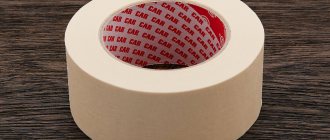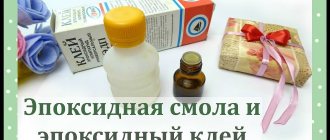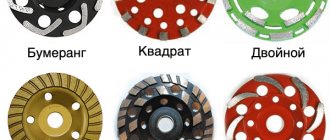Plexiglas is a popular synthetic material that is gaining more and more popularity every day due to its versatility and lightness.
Transparent plastic has found its wide application in everyday life, but is often used in design and artistic creativity. Plexiglas has also gained a permanent niche in the aquarium hobby. Despite the fact that the material looks quite durable, it is quite susceptible to strong mechanical stress, which leads to a logical question: how to glue plexiglass and can this be done at home?
What is dichloroethane?
The substance on which EDC adhesive is made is a colorless, volatile liquid with a very pungent odor. It belongs to organochlorine compounds and is characterized by excellent solubility in various fatty and alcoholic solutions. For dichloroethane to become glue, plexiglass (2%) or polystyrene (10%) should be added to it. As a rule, such a product is used only in mass production. It evaporates quickly and has a detrimental effect on human health. Due to excessive toxicity in everyday life, this drug is used occasionally.
On sale, ethylene chloride is most often found in small glass containers with a volume of 30 ml Source kraski-net.ru
How much does a sheet of plexiglass cost?
Price for block plexiglass of Russian production TOSP, TOSN GOST 17622-7
| Thickness, [mm] | Size, [mm] | Sheet price, [rub] |
| 8 | 1500*1700 | 11530 |
| 10 | 1500*1700 | 15340 |
| 12 | 1500*1700 | 18220 |
| 14 | 1500*1700 | 22820 |
Interesting materials:
What are the main types of educational institutions carrying out educational activities? What frequency does HDMI support? Which icon is better to wear around your neck? What kind of porridge can you eat when drying? Which button should I press to copy? What kind of grain can be brewed? What ointment to use for sprained ligaments? What clothes to take with you to Dubai? What tiles should I put in the bathroom? How much money can you take out of China?
What materials does it glue?
Dichloroethane-based glue is often used to join:
- polyvinyl chloride;
- polystyrene;
- plastic products;
- polymethyl methacrylate.
Additionally, ethylene chloride is often added to chemical products to remove difficult stains. In addition, it is often used when gluing plexiglass.
Dichloroethane glue is perfect for gluing various plastic elements
Types of dichloroethane based glue
Today you can see several varieties of EDC adhesive solutions on sale. They all differ in characteristics and basic properties. To choose the most suitable option for any material, you need to familiarize yourself with the features of each product. Then it will be much easier to determine the composition that will best perform the task assigned to it.
Contact
It is produced with the addition of a hardener or without it at all. How to glue with dichloroethane:
- Apply a little product to both parts.
- Wait until setting occurs.
- Press the elements tightly against each other and apply a weighting agent on top.
The universal dichloroethane adhesive brand Rexant is quite popular. It contains a hardener.
After applying EDC glue to the prepared substrates, complete hardening occurs after a day. Source kraski-net.ru
Liquid
After setting, the dichloroethane solvent completely evaporates, causing the adhesive to harden, resulting in a reliable connection.
This composition can be used on various porous surfaces: plastic, fabric, wood. Liquid glue based on dichloroethane is not at all capable of connecting sealed materials, since it quickly hardens on the latter.
Liquid EDC adhesive is intended for gluing plastic housings made of polystyrene and plexiglass; it cannot be used for gluing food utensils Source cdn1.ozone.ru
Reactionary
Available in both one- and two-component versions. The first can be used without preliminary preparation, the second must be diluted with water in advance. The 2-component composition can be used for only half an hour. For this reason, it is advisable to prepare it in small quantities.
Since the process of gluing elements occurs almost instantly, it is important to connect them correctly from the beginning Source kraski-net.ru
Hot melt adhesive
Even before gluing the plastic with thermal dichloroethane, the latter must be heated well. Under the influence of high temperature (about 120 °C), the adhesive becomes liquid, but after application to the base it quickly cools and hardens again. A similar substance is often applied pointwise and is intended for adhesion of large objects.
To reliably connect surfaces using EDC hot glue, you need to use a glue gun Source ruselectronic.com
Connection with other materials
Due to the wide range of applications of plexiglass, sometimes it is necessary to make gluing with materials that have completely different properties. The main task of successful gluing is the correct selection of the adhesive composition.
With metal
The most popular option for joining plexiglass with another material is gluing it to metal. Quite often in construction stores you can buy a specialized composition that is intended exclusively for combining these two materials. Dichloroethane or liquid nails are also perfect for these purposes.
With glass
The connection between plexiglass and glass is one of the most fragile and difficult to perform. To achieve maximum results, it is recommended to use compositions similar to Cosmoplast 500 or Cosmofen. However, it should be taken into account that adhesive products of this type are extremely unstable to sudden temperature changes.
With a tree
Gluing plexiglass and wood is quite simple, the main problem can only be a visible seam; in order to avoid poor-quality gluing, it is recommended to conduct a trial experiment on unnecessary pieces of the two materials before using the selected composition. The best adhesives for this pair are Cosmofen and superglue.
Instructions for use
Dichloroethane adhesive for plastic is used according to general rules. In this case, the characteristics of the volatile liquid are additionally taken into account.
How to glue plastic with dichloroethane:
- Prepare the surface: clean thoroughly, carefully degrease with acetone.
- Apply the adhesive solution only to the seam area. At the same time, it is important to ensure that the working mixture does not get on the rest of the surface. Otherwise, the adhesive may damage the material.
- Carefully join the edge parts, press tightly, and securely fix.
Important! To obtain a strong connection, the elements must be kept in a fixed position for six hours. During this time, the solution will have time to dry sufficiently.
The surface on which it is planned to apply the adhesive solution must first be cleaned and degreased with acetone Source mirsmazok.ru
Gluing at home
Considering the lightness of the material itself, the process of gluing it at home will not require significant physical activity, but you should approach this procedure responsibly:
- First of all, you should degrease the gluing area; this can be done using many means, for example, gasoline. It is recommended to use disposable towels or any other rags to avoid marks on the plexiglass. Otherwise, the prints may lead to a violation of the strength of the future seam.
- It is necessary to ensure that the parts are fixed with a small gap between them.
- It is better to apply glue to both surfaces. You can use an injection syringe as a dispenser; it will allow you to control the amount of glue, and preliminary removal of the needle bevel will help avoid its splashing. It is necessary to apply the adhesive until the gap between the two parts completely disappears.
- At the next stage, it is necessary to press the connecting parts as tightly as possible to each other; this can be done using twine or a thick elastic bandage.
Precautionary measures
Dichloroethane plastic adhesive is a toxic substance, so it is important to use and store it correctly. This will prevent the adverse effects of the adhesive on human health.
Storing such a product is permissible only in glass or polyethylene containers. Since the liquid easily corrodes most materials, you need to make sure that it does not accidentally spill.
The use of dichloroethane based adhesives is only permitted in well ventilated workshops. In this case, a person must always use protective gloves and a respirator. In addition, thick clothing will reliably protect against accidental contact of chemicals with the skin of your hands and other parts of the body.
Attention! Inhalation of DCE glue may cause problems with digestion and liver function.
When using dichloroethane-based glue for gluing plastic, it is important to use protective gloves and a respirator Source i.ytimg.com
Security measures
Regardless of what adhesive composition and in what quantity is intended to be used, it is necessary to understand that all products intended for this purpose have high chemical activity and are harmful to humans during prolonged contact.
IMPORTANT:
When working with any adhesive compositions, it is important to remember fire safety, do not smoke near solutions and do not eat food near them.
It is recommended to carry out all work related to the gluing process in the fresh air or in well-ventilated areas. In any case, you should use safety glasses, rubber gloves, a respirator or a regular medical mask. If adhesives come into contact with the skin, rinse the area with water as quickly as possible.
How to do it yourself
Dichloroethane-based glue is very easy to make with your own hands. To do this you need to do the following:
- Prepare a tightly closed container (preferably glass).
- Place the required volume of ethylene chloride into it.
- Add crushed plastic. It should be completely immersed in the solution.
- Close the container hermetically and put it in a dark room.
- After dissolving the plastic material, the finished adhesive composition can be used for its intended purpose.
The amount of plastic used is directly proportional to how thick the product needs to be. Instead of plastic, plexiglass can be used in a similar way.
Before gluing plastic with homemade dichloroethane, it should be tested on a small area of the surface that is planned to be glued. Only in the absence of negative impact is it permissible to proceed with the main task.
Since dichloroethane evaporates quickly, it is important to use a hermetically sealed container to prepare glue based on it Source i.ytimg.com
Useful tips
To carry out work safely and obtain a positive result, it is advisable to take into account the following recommendations from experienced professionals:
To carry out work safely and obtain a positive result, it is advisable to take into account the following recommendations from experienced professionals:
- Do not allow moisture to get into the fresh seam. Otherwise, the connection will lose its strength.
- Since dichloroethane glue takes a long time to dry, if necessary, you can make minor adjustments to the location of the parts.
- When squeezing a seam, it is important to check the evenness of the elements.
- To store ethylene chloride, it is better to choose small containers (no more than 50 ml). They are quite stable; a lot of solution will not spill from them.
- It is not recommended to leave containers with toxic substances open.
Dichloroethane glue is capable of reliably connecting plastic parts. But carrying out such work requires special care and strict adherence to safety rules.
How to glue plexiglass
Typically, special agents for adhesion of organic glass contain acrylic fillers or highly effective solvents. In their composition, they are not much different from the substance of plexiglass, so subsequent use makes it possible to obtain an extremely strong, monolithic connection.
Adhesive mixtures containing epoxy resins are best suited for repairing small cracks in objects. Moreover, such solutions harden for a relatively long time, but the result is high-quality.
Additionally, plexiglass can be glued with acids: formic, acetic, and other varieties.
It is impossible to combine organic glass with ordinary vinegar (9%): a minimum of 70 percent vinegar essence is required. The latter does not dissolve the top layer of the material (it only softens it slightly), so the elements will have to be pressed tightly and then kept in this state for some more time.
Plexiglass is usually glued using popular adhesives containing acrylic, solvent or epoxy resin Source i.ytimg.com
Types of adhesives for plexiglass
Adhesives are primarily distinguished by their basic characteristics and can be used only for gluing plexiglass or creating strong connections with other materials. Also important factors when choosing an adhesive should be the relatively safe composition and price of the product. To save money, you can use improvised means like vinegar or give preference to specialized adhesives.
Solvents
Using solvents, you can connect plexiglass together, but such a seam will most likely turn out to be fragile and subsequently a crack may occur. For a better connection, it is recommended to dissolve plexiglass shavings in the selected liquid, after which the hardened seam will be more durable. Acid, such as formic or acetic acid, is most often used as a solvent.
ON A NOTE:
It is not recommended to use acetone containing products as a solvent or an additive to it; the dissolution time in such plexiglass compositions is about 10 hours, with regular stirring of the mixture.
Factory glue
The use of factory glue guarantees the most effective connection of plexiglass with any other materials. There are a huge variety of adhesives that differ in price, quality of the future seam and service life. One of the most versatile adhesives for plexiglass is Cosmofen, which is also called liquid plastic. When using this adhesive composition, you can obtain a joint between two plexiglass parts without a seam. Most often, this glue is used when working with plastic windows.
Dichloroethane
Using this product is one of the most budget-friendly options; you can buy it at any store that sells chemical components.
If it is necessary to glue smooth surfaces, then dichloroethane can be used as an independent adhesive, the seam will be quite transparent and perfectly smooth. With proper preparation of materials, the seam does not contain bubbles, but if they appear, it means that the technology was violated when processing the parts.
IMPORTANT:
When working with dichloroethane, be sure to take all precautions, as this substance is hazardous to health. When storing it, ensure that it is stored in tightly closed containers.
Epoxy resin
The use of epoxy resin or glue containing it ensures instant, tight gluing, while guaranteeing a transparent seam at the joint when drying. Epoxy resin is transparent on its own, which makes for interesting combinations, especially when used with wood.
Adhesive film
In order to glue two pieces of plexiglass together, a self-adhesive adhesive film is ideal, providing a strong connection.
In contrast to the goals pursued, it is necessary to choose one of the three most popular options for such film:
- Baseless adhesive film. The choice of this option will be especially relevant if the task is to maintain the transparency of a plexiglass product. It is recommended to apply the film on as smooth a surface as possible.
- Film with a thin transparent base. A distinctive feature of this type of film can be considered the possibility of its subsequent removal. It is applied to the flat surface of two plexiglass elements or to connect plexiglass with other materials.
- Film with a thin foam base. This option vaguely resembles thick double-sided tape; with the help of such a film, even uneven surfaces can be glued, but the connection may be of poor quality; this method is suitable for structures that do not involve further heavy loads.
ADVICE:
You should pay attention to the composition of each type of adhesive films, especially the indication of the optimal load that they can withstand, as well as the recommended service life.
Which glue to choose
Based on the principle of influence, all adhesives are divided into 2 huge groups:
- The upper layers of the parts to be joined are dissolved, after which the seam material forms a single whole. This type of bonding is also called "cold welding".
- Between the elements there is glue, which ensures high adhesion. Such a connection is considered less durable, since plexiglass is slightly porous, and it is difficult for the adhesive solution to cling to the base.
Important! The components of any adhesives are extremely active chemicals that instantly ignite and are dangerous to the human body. Therefore, they should be used very carefully.
How to seal a crack in plexiglass?
Repair of plexiglass is carried out by gluing acrylic cracks. For a reliable connection you will need a good glue specifically designed for plastic. The best adhesive that will permanently join two pieces of plexiglass is dichloroethane.
Interesting materials:
What is electronic conductivity of semiconductors? What is an elementary statement? What is the empirical basis? What is EMS ePacket? What is Enigma Wikipedia? What is an encoder for a motor? What is the Enteral route of administration? What is enzyme facial peeling? What is an epithet and examples for it? What is Epk in the archive?











